As cyber threats grow more sophisticated, security teams need tools that deliver speed, clarity, and actionable context. The right threat intelligence tools can expose malicious infrastructure, detect suspicious activity, reduce false positives, and help you move faster when the stakes are high.
This list highlights 12 of the best threat intelligence tools in 2025, including tools such as malware sandboxes, phishing detectors, identity resolution, and internet scanning platforms. For those working in law enforcement, SOC operations, or corporate security investigations, these tools help connect the dots across indicators, networks, and adversaries.
Horizon™ Identity
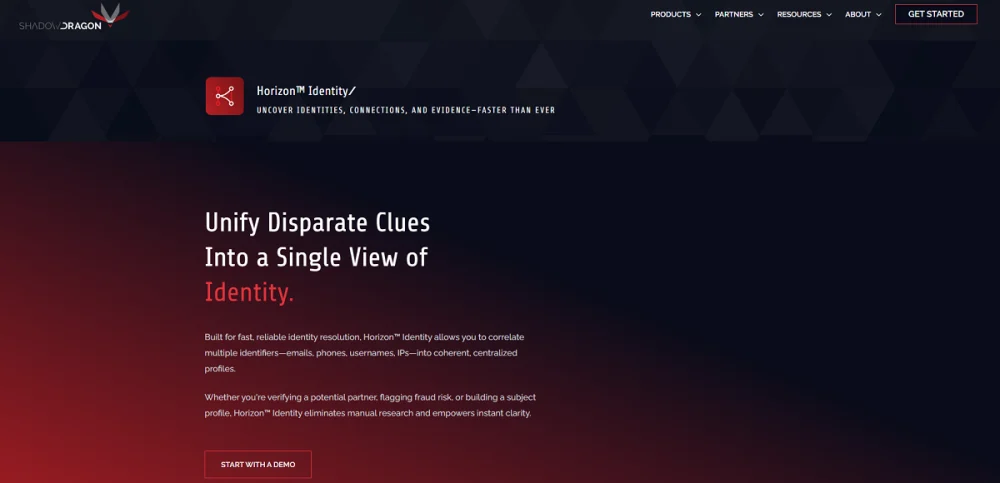
ShadowDragon’s Horizon™ Identity uncovers high-fidelity digital identity profiles for teams working in law enforcement, corporate security, compliance, investigative journalism, and more.
Designed for ease of use, Horizon™ Identity turns a single data point, such as an email, username, or phone number, into a rich digital identity profile within seconds.
Automatically correlating identifiers across more than 550 public sources, 1,500+ endpoints, and over 15 billion breach records, Horizon Identity surfaces associated online personas, behavior and social media activity, and even geolocation indicators. Click into any of the discovered identifiers to expand your search and follow new investigative leads, all within a streamlined interface that’s as simple to use as a search bar.
Horizon™ Identity is part of the wider Horizon™ platform, integrating smoothly with SocialNet and Horizon™ Monitor for advanced link analysis and real‑time threat monitoring.
VirusTotal
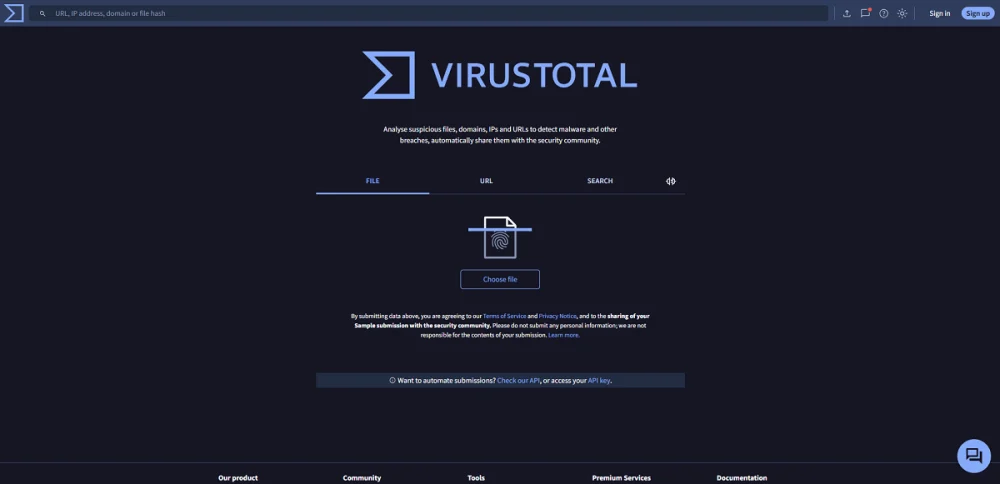
VirusTotal is a cloud-based threat intelligence solution that can analyze files, URLs, IP addresses, and domains, aggregating data from more than 70 antivirus engines, URL scanners, sandbox tools, and machine learning models. Users can upload artifacts or search by hash, and VirusTotal delivers instant, multi-engine verdicts on potential malicious activity, enhanced with file metadata, behavior analysis, and community-driven insights.
It offers an intuitive, web-based interface and is widely used for quick triage, as well as advanced features, such as Livehunt and Retrohunt, for in-depth threat hunting against historical data with YARA rules and behavioral indicators.
VirusTotal is designed for analysts, researchers, and incident response teams looking to perform threat research, digital forensics, or in-depth malware analysis. Features like dynamic sandboxing, IOC extraction, and AI-assisted code analysis help extract more context for in-depth incident investigation. Its intelligence tools help uncover relationships between artifacts, detect emerging campaigns, and track threat actors over time.
DomainTools
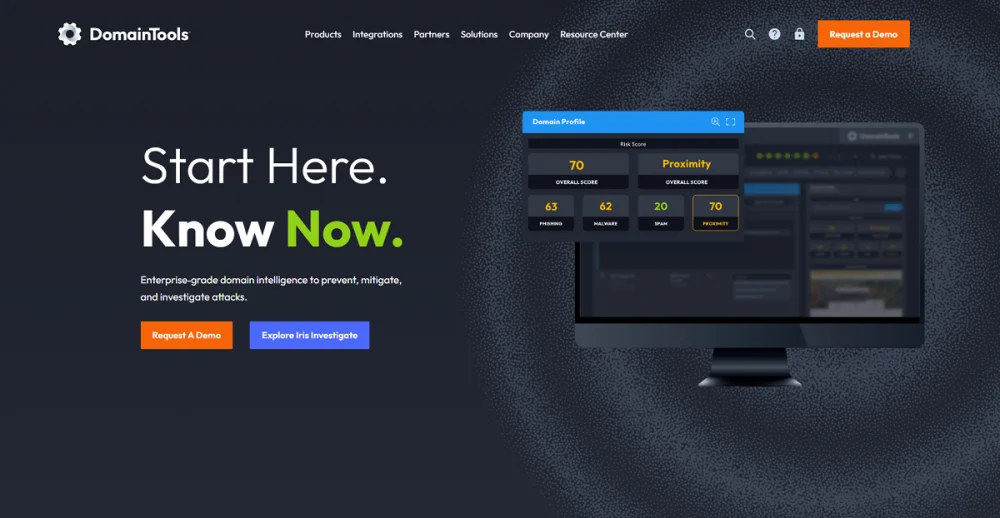
DomainTools is a leading provider of internet intelligence, specializing in domain and DNS-based threat detection and investigation. The Iris Intelligence Platform by DomainTools, its flagship product, consists of three main modules: Iris Investigate, which uncovers related infrastructure and reveals the full extent of a threat actor’s network; Iris Detect, which scans for lookalike and suspicious domains targeting an organization; and Iris Enrich, which delivers real-time domain intelligence enrichment for SIEM and SOAR tools.
DomainTools also provides the Farsight DNSDB, a historical and real-time passive DNS data archive backed by a dataset that covers 97% of the visible internet, that supports threat hunting, incident response, and attack surface management. Its Predictive Threat Feeds, such as the Domain Hotlist and Newly Observed Domains feed, help security and intelligence teams identify higher risk domains in their environment at the earliest stages possible.
In addition, it offers DomainTools Investigations (DTI), a public research and analysis project that regularly publishes in-depth reports on cyber threats and adversary tactics. The tools and services provided by DomainTools have been shown to increase threat visibility and reduce the cost of domain threat investigations, making it a popular tool among analysts for proactive domain risk management.
GreyNoise
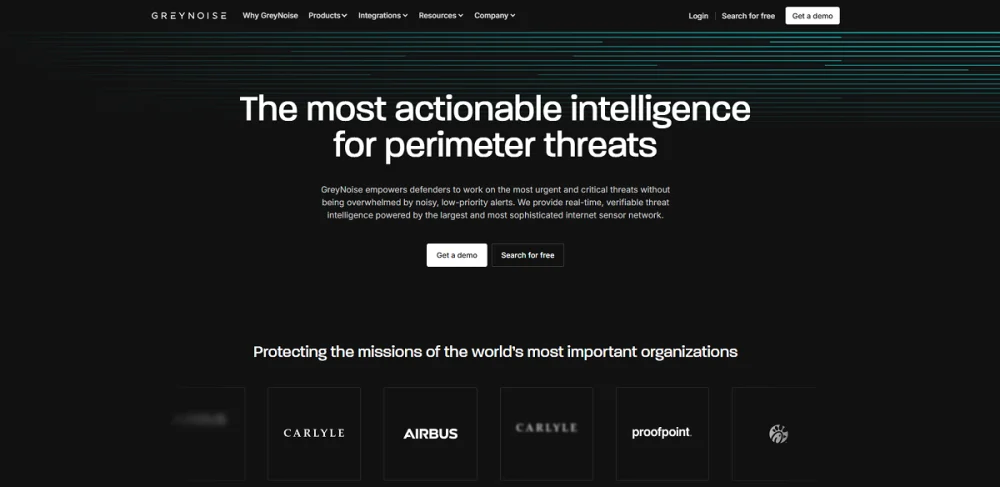
GreyNoise is a cybersecurity threat intelligence tool that identifies and filters out “internet background noise,” or mass scanning and automated probing across the IPv4 space, allowing teams to focus on truly targeted threats.
Traditional threat intelligence focuses on surfacing the IPs you need to worry about. GreyNoise, on the other hand, helps you understand which IPs are not targeted threats: scanning bots, search engine crawlers, benign researchers, or cloud infrastructure traffic (the RIOT dataset). As a result, it helps to eliminate thousands of false positives every day.
Teams that use GreyNoise to supplement their SecOps report significant reductions in alert volume, improving mean time to response and saving analysts hours of valuable time each week. Its tag-based enrichment and “nuisance noise” filtering capabilities allow SOC teams to speed up incident response, triage more accurately, improve vulnerability validation, and focus on high-fidelity events directly affecting their infrastructure.
Shodan
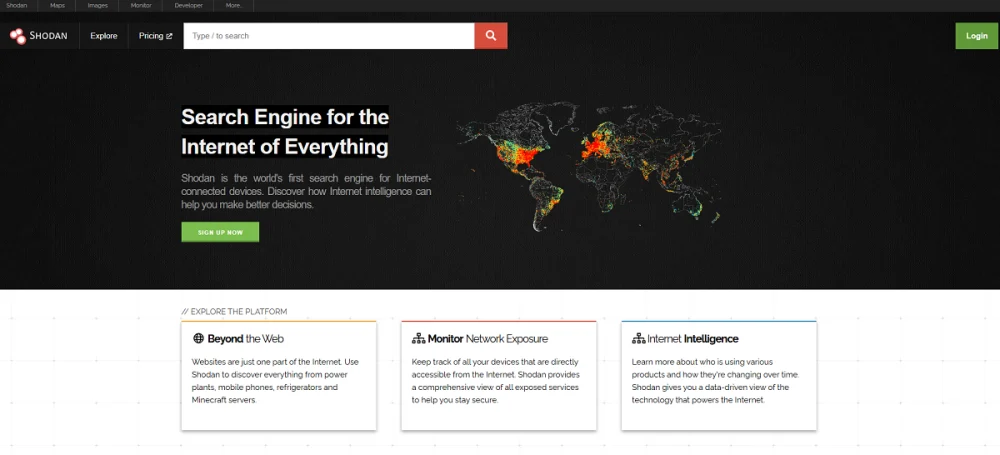
Shodan is a search engine that indexes internet-connected devices, rather than web content. It crawls the public-facing internet looking for open ports and collects metadata (banners) from services such as HTTP, FTP, SSH, and industrial control systems. As a threat intelligence tool, Shodan supports vulnerability assessments, reconnaissance, botnet monitoring, and incident response. Its real-time visibility into connected devices helps teams track emerging threats like Cobalt Strike beacons or newly exposed RDP endpoints.
Security researchers use Shodan to discover exposed infrastructure, old software versions, and misconfigured assets. Allowing queries filtered by IP, port, organization, and technology, Shodan is an effective tool to map your organization’s external attack surface and identify potential vulnerabilities before they’re exploited.
Censys
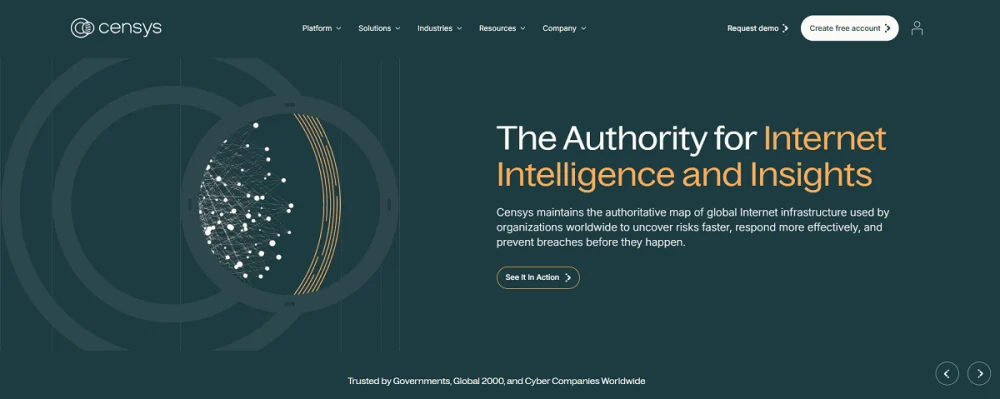
Censys is a threat intelligence tool that crawls the entire IPv4 address space and top-level domains at regular intervals, providing a real-time map of global internet infrastructure. It captures publicly available metadata, such as open services, TLS certificates, configurations, host names, and other identifiers, without attempting to probe behind security measures or exploit devices.
Security teams, researchers, and CERTs use Censys to get a detailed picture of their external attack surface, track Internet-facing assets on IPv4, and feed Censys data to SIEMs, BigQuery, and vulnerability management tools for added context.
PhishTank
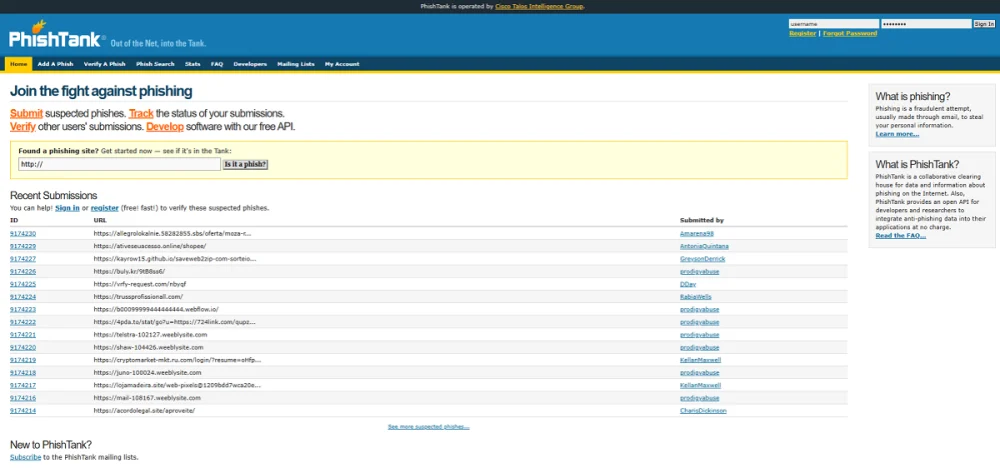
PhishTank is a free, community-powered threat intelligence tool run by Cisco Talos that focuses exclusively on identifying and verifying phishing websites. PhishTank allows members of the public to submit suspected phishing URLs for verification. Verified URLs are then added to PhishTank’s database and validated through a voting system by other members of the community.
Once verified, these URLs are added to a central database, which is accessible through an open API and downloadable feeds. Researchers, email providers, and security vendors can then utilize PhishTank’s up-to-date phishing intelligence to enhance detection and protection mechanisms.
URLScan.io
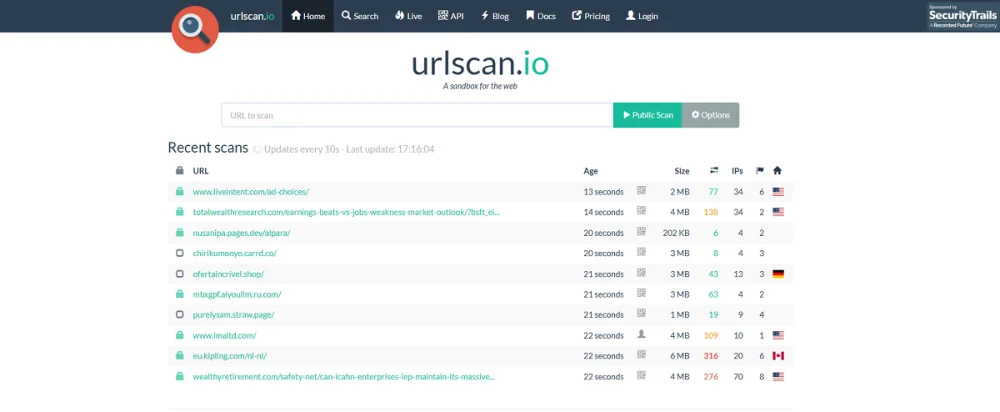
URLScan.io is a web-based threat intelligence platform that enables users to analyze, research, and safely investigate URLs. The tool loads URLs inside a headless browser sandbox and captures the page content, its DOM structure, HTTP requests, redirects, and more.
URLScan.io also extracts metadata, including IP addresses, other domains, scripts, cookies and even a screenshot of the URL. This threat intelligence tool is helpful for security analysts, malware researchers and incident responders, providing insight into a URL’s behavior and whether it’s malicious or associated with phishing, malware, or other suspicious activity.
ThreatFox (by abuse.ch)
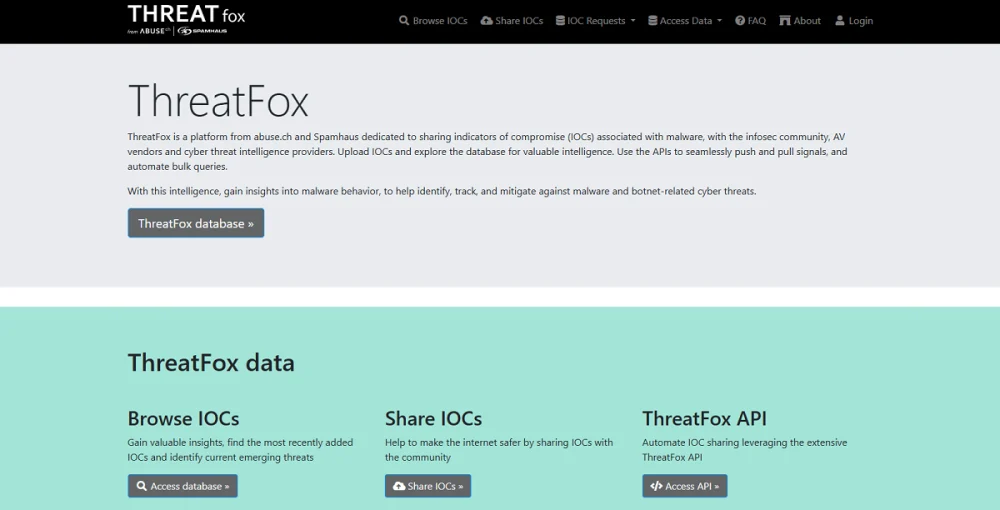
ThreatFox is an open, community-powered threat intelligence sharing tool, developed by abuse.ch in cooperation with Spamhaus. The service, which is free to use, is centered around the exchange of IOCs related to malware.
ThreatFox supports a variety of IOC types, including IP:port combinations, domains, URLs, email addresses, and file hashes. In addition to these IOC attributes, each entry can be tagged with malware family tags, confidence scores, and other context such as comments or external references.
Users can both contribute and request IOCs, earning or awarding credits based on the value of submissions. ThreatFox is accessible to analysts of all skill levels, offering a clean web interface and a REST API for automation.
AbuseIPDB
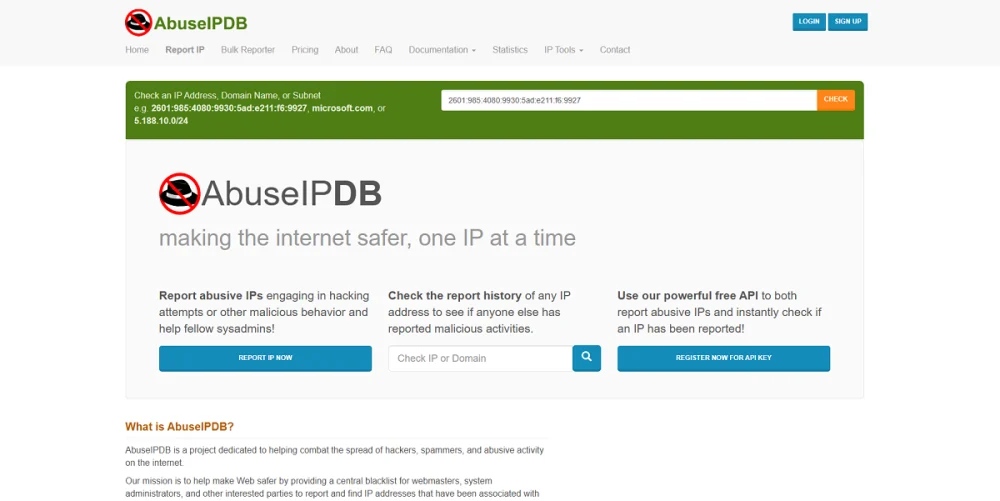
AbuseIPDB is an open, community-driven threat intelligence sharing tool for reporting and researching abusive IP addresses. It can be used by system and network administrators, security analysts, software developers, and other analysts and researchers to report or look up suspicious or malicious IP addresses and abuse behavior, such as brute-force attacks, spamming, and scanning.
AbuseIPDB assigns each reported IP address an “Abuse Confidence Score” based on all user-submitted reports. This enables users to easily determine an IP address’s reputation and the likelihood of malicious behavior. It also includes detailed metadata, such as ISP, geolocation, and report history, to aid in incident response and investigation.
Hybrid Analysis
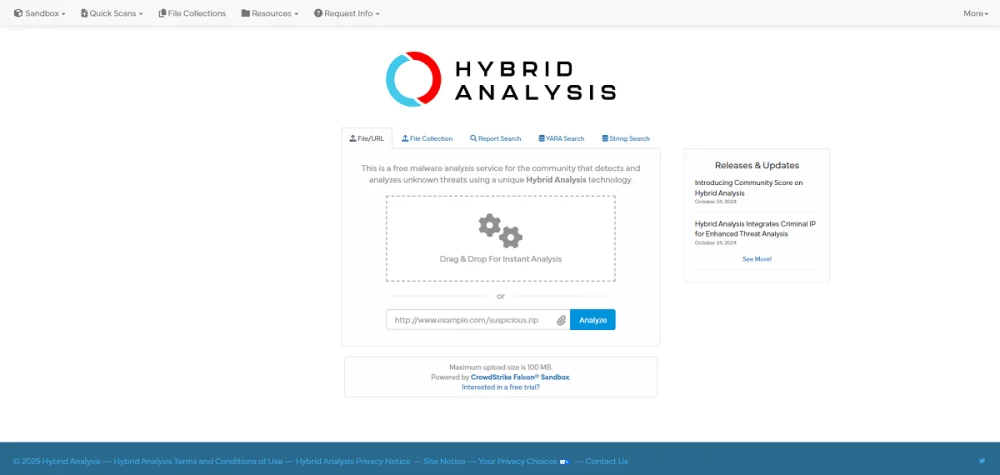
A free malware analysis tool developed by CrowdStrike, Hybrid Analysis combines static and dynamic analysis to evaluate potentially malicious files and URLs. Hybrid Analysis runs samples in various sandboxed environments (such as Windows 7/10 and Android) to observe actions such as process injections, file modifications, and network activity. This data can then be augmented with machine learning and antivirus scans to provide actionable malware detection information.
Hybrid Analysis can extract IOCs, including IPs, domains, hashes, and URLs, and can provide actionable reports for each submission. It also offers a searchable database of millions of already-analyzed samples. Providing in-depth analysis with minimal setup or cost, it’s especially useful for incident response, threat hunting, and malware research.
Spamhaus Lookup Tool
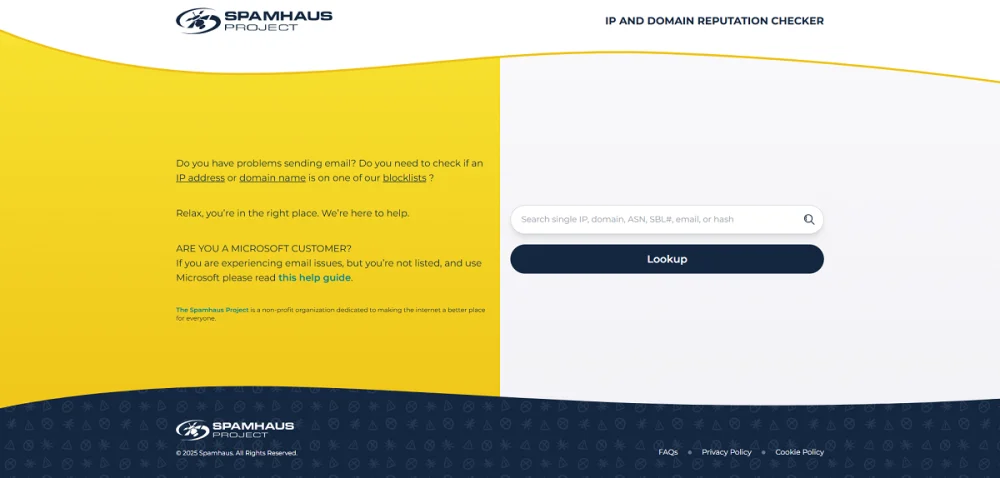
Spamhaus Lookup Tool is a free threat intelligence utility that checks IP addresses, domains, email addresses, and other identifiers against Spamhaus’s reputation blocklists. It automatically detects the requesting user’s public IP and displays any active listings in several databases: SBL (Spamhaus Blocklist), XBL (Exploits Blocklist), PBL (Policy Blocklist), CSS (Combined Spam Sources), DBL (Domain Blocklist) and the combined ZEN list. For any active listings, it provides explanations, severity indications and remediation advice.
Spamhaus Lookup Tool directs users to the relevant free delisting process, which is handled directly by Spamhaus free of charge. It helps users understand reputation problems and remediate them quickly, playing a key role in maintaining clean email practices and preventing abuse from compromised or misconfigured systems.
What to Look for in Threat Intelligence Tools: Key Considerations
Some threat intelligence tools work better for different purposes, such as triaging, tracking threats, or hardening your networks. The right threat intelligence tool is one that meets your operational needs and works with your existing security stack. Here are some key criteria to consider when selecting threat intelligence tools.
Coverage and Depth
The wider the range of sources a platform monitors (DNS, malware, dark web, breach data, scanning activity, etc. ), the more likely you are to discover early-stage indicators for things like intrusions or campaigns. Coverage should also include depth of enrichment. Raw indicators of compromise are valuable, but enriched context is what makes them actionable.
Attribution and Identity Resolution
For analysts who profile threat actors and need to identify links to real-world identities, tools that facilitate identity correlation are very helpful. This is where solutions like Horizon™ Identity give security analysts a competitive advantage.
Noise Reduction and Prioritization
Alerts are useless if they are mostly false positives or irrelevant to your security posture. Look for features that let you filter out benign traffic, tag known scanning bots, or assign confidence scores.
Pivoting and Connection Mapping
The best threat intelligence tools don’t stop at surface data. They help you pivot from one piece of data to related domains, infrastructure, accounts, other file hashes, or behavior patterns.
This ability to trace connections in real time is key to uncovering full threat narratives. Look for tools with seamless workflows, fast queries, strong visualizations, and minimal configuration that allow you to move quickly and follow investigative threads without interruption.
Ease of Use
Usability matters, especially when time and clarity are critical. Tools like Horizon™ Identity are built for users at any skill level, removing technical friction while still surfacing high-fidelity intelligence. Clean interfaces and intuitive navigation make it easier to understand complex relationships, enabling faster decisions and fewer roadblocks during high-stakes investigations.
Integrations and Automation
Threat intelligence isn’t helpful if it exists in a silo. Ideally, it should flow into your SIEM, SOAR, TIP, or ticketing system for further analysis, enforcement, or documentation. Tools with strong API support and exportable formats ensure your threat intelligence becomes part of your broader detection and response system.
Final Thoughts
The threat intelligence market is crowded and complex, but the best tools cut through the noise to reveal real risk, allowing analysts to focus on the threats that matter and take immediate action. Each threat intelligence tool featured in this article offers unique capabilities that support and accelerate the investigation process.
ShadowDragon’s Horizon™ Identity stands out for its ability to rapidly convert minimal clues into deep digital identity profiles. It gives investigators a high-fidelity view of online personas, starting from a single data point. With just an email, phone number, handle, or other identifier, Horizon™ Identity correlates data across more than 550 public sources, 1,500+ endpoints, and over 15 billion breach records. Its speed, simplicity, and seamless integration with tools like SocialNet and Horizon™ Monitor make it especially valuable for teams that need fast answers without technical hurdles. For organizations focused on attribution, identity resolution, and real-world impact, Horizon™ Identity is a powerful force multiplier.


